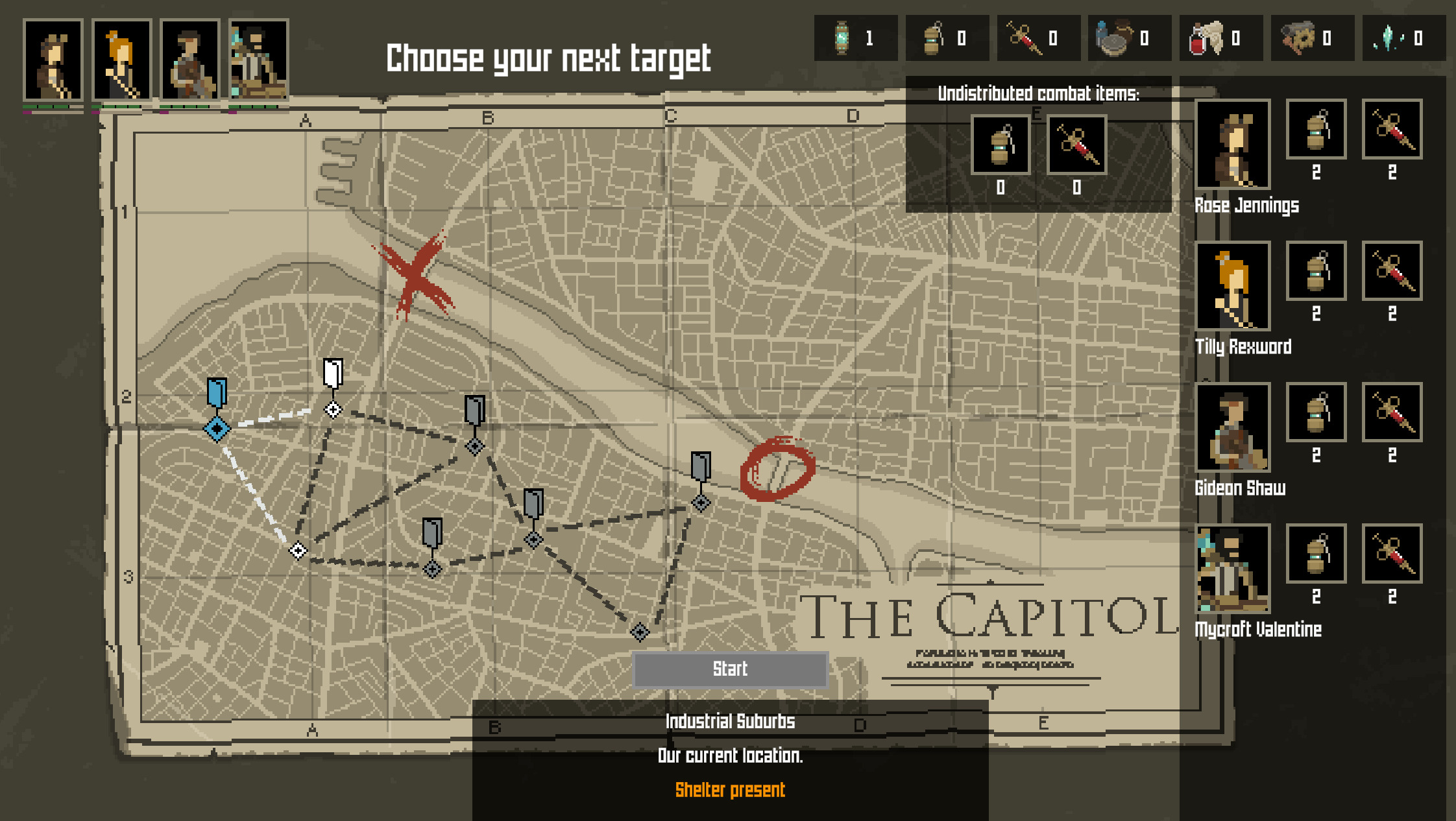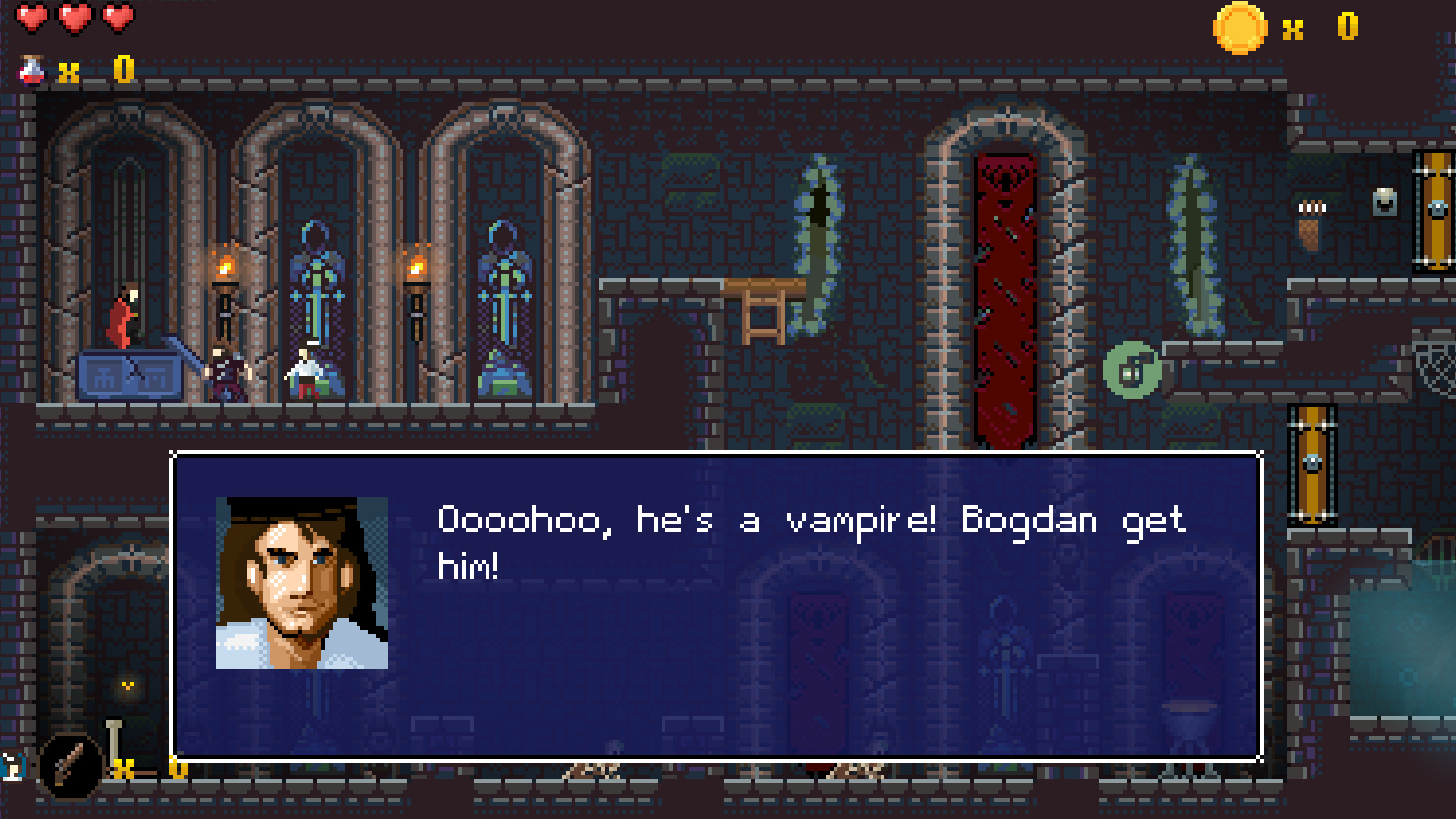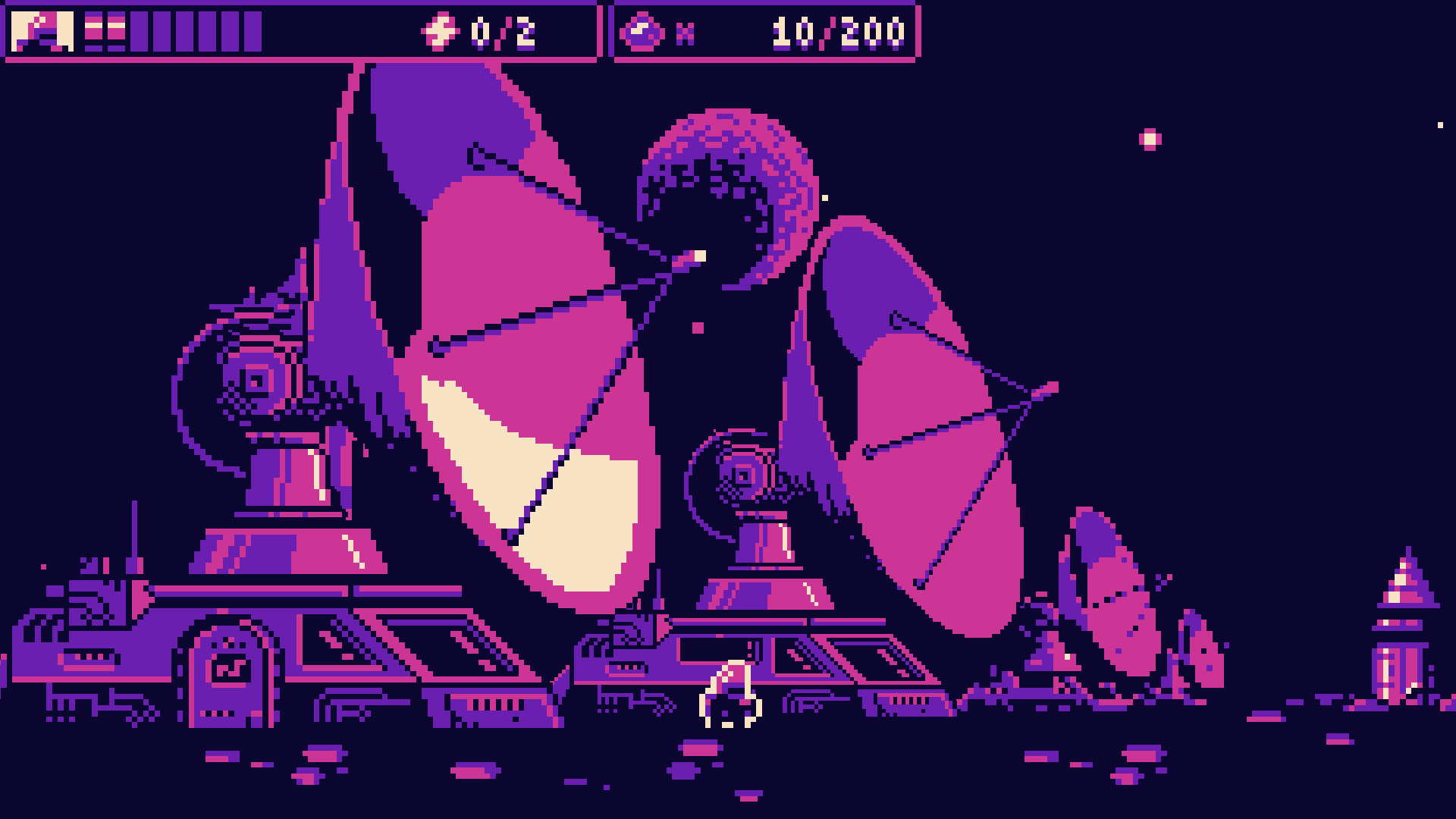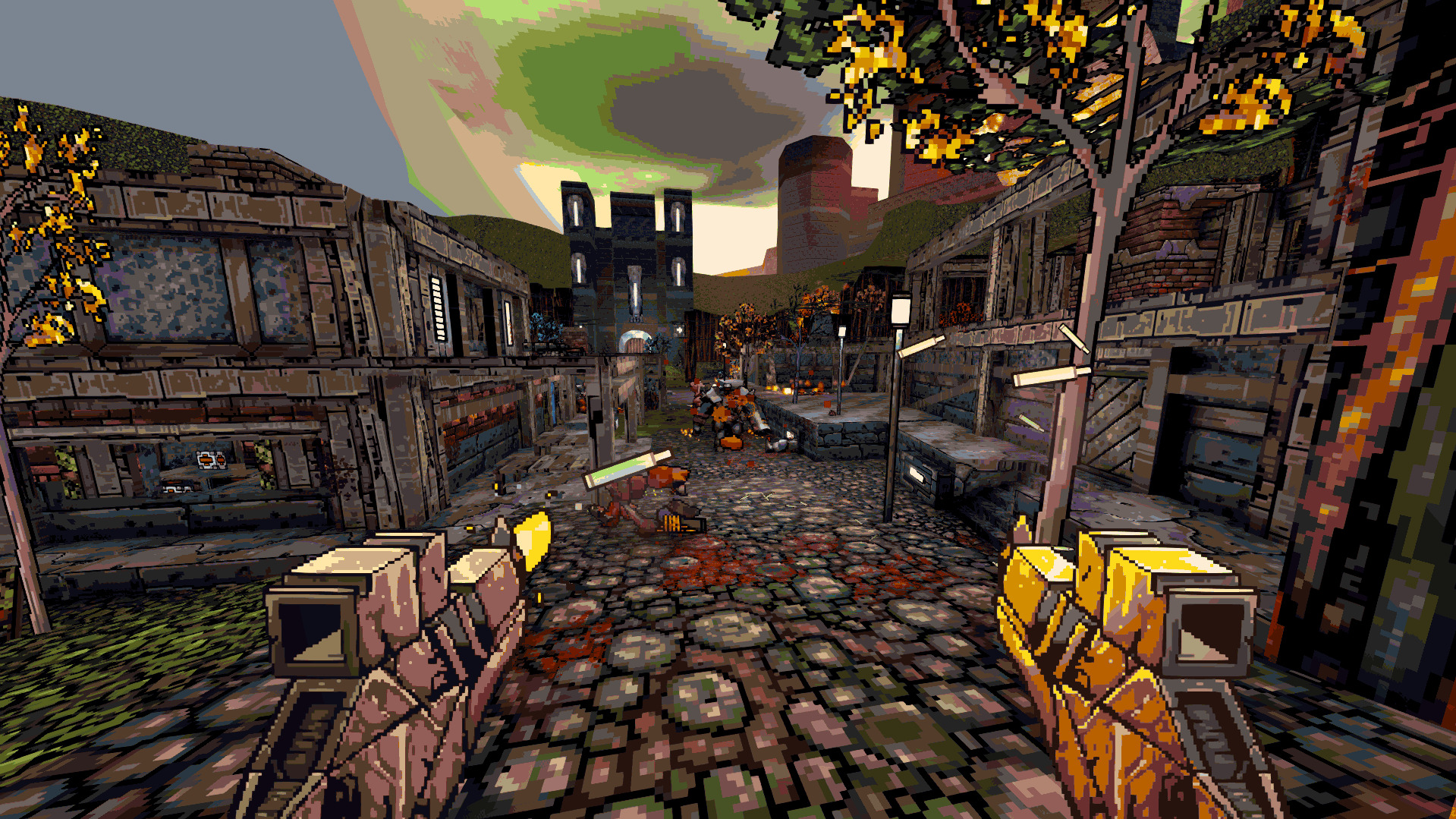Many independent developers seem to have a similar story - come up with a cool idea, work hard on it, then release it to the public. But it’s in the details where each story seems to be a little bit different. Today, we have creators from five studios discussing the creative process of their newest titles that they are working on in cooperation with RetroVibe and GOG.COM.GOG.COM: Let’s say we’re browsing through the store and spot the game you are currently working on – give us a short pitch on why it’s worth waiting on and rooting for.Buckshot Software:
Project Warlock II is a retro shooter with non-stop action and blood-spattered pixels flying everywhere. There’s also an epic rock and synth soundtrack and an entirely new atmospheric sound design. The game improves upon every aspect of the original. With the DNA of retro classics like Blood and Hexen running through the veins of both games, Project Warlock II is looking towards Quake, where Project Warlock’s eye was on Doom.

Project Warlock II will be a bigger, better, and completely enhanced experience compared to the previous game. I am hoping that anyone who played Project Warlock is going to have a good time with PWII. And for those who never got around to playing it – I tried to make sure that it delivers a tremendous amount of old-school vibes to anyone who likes the 90s shooters.
Onix Games:
Janosik 2 is a retro action-platformer with Metroidvania elements, inspired by the story of the legendary Eastern European folk hero – Janosik. The game is filled with magic and adventure presented in gorgeous pixel art visuals (resembling the famous Broforce).
In Janosik 2, we join three playable characters: Janosik, a Werewolf, and a Vampire, each with their own different set of skills and weapons. This means that some environmental puzzles in the game require the use of specific characters and their skills. It’s also worth noting that this is the first game to shed some light on the possible relations between a human, a werewolf, and a vegetarian vampire!
Tactical Dogs:
The Looter is a game that combines an engaging story and interesting characters with gameplay that rewards exploration. It features satisfying combat, a variety of enemies and bosses, and beautiful pixel-art graphics!

Small bros:
B.I.O.T.A. is a game with a unique visual style. In regards to the pixel art, you probably won’t find any other quite aesthetically similar. And don’t get fooled by the similarities with some of the Game Boy games out there, because the similarities start and end with the 4-color palette. In fact, I wanted to give the game a completely unique look by using bright and dark tones in a totally different way than in most of the classic Game Boy clones.
Apart from that, in B.I.O.T.A., you can control your character and use weapons in a very satisfactory way. The whole map of the game is built in a way to give the gamer as little feeling of backtracking as possible. Finally, you’ll find a lot of selectable characters here, which is kind of a unique feature in Metroidvania games.
Clockwork Pile: In short –
Shardpunk: Verminfall is fun to play! It has engaging, risk/reward tactical decisions and a great atmosphere. It does not get repetitive thanks to different character types, quasi-randomizable levels, and unlockable stuff. And it's a game about shooting big, mutated rats with steam-powered guns and lightning bolt throwers. I mean – that alone is a good reason to look out for it!
Stephen King once said that the best ideas are those “that stick around”. How did you come up with the ideas for your games? What does the creative process look like in your studio?
Buckshot Software: The most important aspect of our development was taking into account the feedback gathered from the previous game – it definitely has had a huge impact on our design process for Project Warlock II. We tried to implement and fix most of the crucial aspects that players criticized. Feedback is our driving force. When it comes to the creative process – we like to imagine the stuff that we really like, and then we just do it :) If we think something sounds cool – we implement it.
Onix Games: First, you have to create or find a protagonist for the game. In this case, the main protagonist is a legendary folk hero. After that, it’s time to craft the story and work on elements that serve it: intro, graphics, sounds, music, mechanics, dialogues, weapons, etc. At that stage, I like to stick to simplicity, while avoiding complicated mechanics.

I like to gather feedback from friends at the early stage of the development process. It’s also helpful to create the game as its story goes – from start to finish. After the game is done, all you have to do is to test and release it.
Tactical Dogs: In most cases, the ideas that stay are the ones we came up with a long time ago and improved upon - provided that all of the team members agreed that it is worth exploring. In the past, there were A LOT of arguments and fights, but over time we managed to achieve compromises fast and (most of the time) without issues.
Now, as we are a bit more seasoned, we try to think about implementation and the end result instead of ‘WILL IT BE FUN?” only. Among the three of us, each is our own “head of the department,” meaning Łukasz leads art, Krzysiek leads design and level building, and Walczak leads coding. If a situation demands it, the head has the final say if a problem is tied to their department.

Small bros: I started thinking about B.I.O.T.A. during a period of “forced” lack of creativity. I was reading something about biology stuff, came across the term “Biota,” and started thinking that this could be a cool game name. Then I began thinking about scenarios that involve DNA mutation, biological agents, and so on.
The first design I wrote down was pretty different, even though the overall mood and atmosphere remained the same. First of all, I think about setting and characters, drawing a mockup that involves both the environment and the characters to use as a guide for the game’s art style. Then I start working extensively on characters animation, physics and commands until I'm 100% satisfied. Then – it’s time for all the rest that makes the game.
Clockwork Pile: The ideas come up when I'm talking to someone else about the game. Also, I tend to go on long evening walks, and while on those, lots of good ideas shape up.

That being said, having an idea is just the first step. Then comes the initial implementation phase, where the idea finds its way into the game, in a rough form. After some playtesting, I can decide whether I'm having fun with it or not - and that's when it either gets thrown into oblivion or gets refined and finally makes its way to the game.
Want to know more about the upcoming indie titles mentioned above? Visit the Retrovibe Twitch channel and stay tuned for news, interviews, and precious insights into the video game’s development process!  Project Warlock II will be a bigger, better, and completely enhanced experience compared to the previous game. I am hoping that anyone who played Project Warlock is going to have a good time with PWII. And for those who never got around to playing it – I tried to make sure that it delivers a tremendous amount of old-school vibes to anyone who likes the 90s shooters.Onix Games: Janosik 2 is a retro action-platformer with Metroidvania elements, inspired by the story of the legendary Eastern European folk hero – Janosik. The game is filled with magic and adventure presented in gorgeous pixel art visuals (resembling the famous Broforce).In Janosik 2, we join three playable characters: Janosik, a Werewolf, and a Vampire, each with their own different set of skills and weapons. This means that some environmental puzzles in the game require the use of specific characters and their skills. It’s also worth noting that this is the first game to shed some light on the possible relations between a human, a werewolf, and a vegetarian vampire!Tactical Dogs: The Looter is a game that combines an engaging story and interesting characters with gameplay that rewards exploration. It features satisfying combat, a variety of enemies and bosses, and beautiful pixel-art graphics!
Project Warlock II will be a bigger, better, and completely enhanced experience compared to the previous game. I am hoping that anyone who played Project Warlock is going to have a good time with PWII. And for those who never got around to playing it – I tried to make sure that it delivers a tremendous amount of old-school vibes to anyone who likes the 90s shooters.Onix Games: Janosik 2 is a retro action-platformer with Metroidvania elements, inspired by the story of the legendary Eastern European folk hero – Janosik. The game is filled with magic and adventure presented in gorgeous pixel art visuals (resembling the famous Broforce).In Janosik 2, we join three playable characters: Janosik, a Werewolf, and a Vampire, each with their own different set of skills and weapons. This means that some environmental puzzles in the game require the use of specific characters and their skills. It’s also worth noting that this is the first game to shed some light on the possible relations between a human, a werewolf, and a vegetarian vampire!Tactical Dogs: The Looter is a game that combines an engaging story and interesting characters with gameplay that rewards exploration. It features satisfying combat, a variety of enemies and bosses, and beautiful pixel-art graphics! Small bros: B.I.O.T.A. is a game with a unique visual style. In regards to the pixel art, you probably won’t find any other quite aesthetically similar. And don’t get fooled by the similarities with some of the Game Boy games out there, because the similarities start and end with the 4-color palette. In fact, I wanted to give the game a completely unique look by using bright and dark tones in a totally different way than in most of the classic Game Boy clones.Apart from that, in B.I.O.T.A., you can control your character and use weapons in a very satisfactory way. The whole map of the game is built in a way to give the gamer as little feeling of backtracking as possible. Finally, you’ll find a lot of selectable characters here, which is kind of a unique feature in Metroidvania games.Clockwork Pile: In short – Shardpunk: Verminfall is fun to play! It has engaging, risk/reward tactical decisions and a great atmosphere. It does not get repetitive thanks to different character types, quasi-randomizable levels, and unlockable stuff. And it's a game about shooting big, mutated rats with steam-powered guns and lightning bolt throwers. I mean – that alone is a good reason to look out for it!Stephen King once said that the best ideas are those “that stick around”. How did you come up with the ideas for your games? What does the creative process look like in your studio?
Small bros: B.I.O.T.A. is a game with a unique visual style. In regards to the pixel art, you probably won’t find any other quite aesthetically similar. And don’t get fooled by the similarities with some of the Game Boy games out there, because the similarities start and end with the 4-color palette. In fact, I wanted to give the game a completely unique look by using bright and dark tones in a totally different way than in most of the classic Game Boy clones.Apart from that, in B.I.O.T.A., you can control your character and use weapons in a very satisfactory way. The whole map of the game is built in a way to give the gamer as little feeling of backtracking as possible. Finally, you’ll find a lot of selectable characters here, which is kind of a unique feature in Metroidvania games.Clockwork Pile: In short – Shardpunk: Verminfall is fun to play! It has engaging, risk/reward tactical decisions and a great atmosphere. It does not get repetitive thanks to different character types, quasi-randomizable levels, and unlockable stuff. And it's a game about shooting big, mutated rats with steam-powered guns and lightning bolt throwers. I mean – that alone is a good reason to look out for it!Stephen King once said that the best ideas are those “that stick around”. How did you come up with the ideas for your games? What does the creative process look like in your studio? Buckshot Software: The most important aspect of our development was taking into account the feedback gathered from the previous game – it definitely has had a huge impact on our design process for Project Warlock II. We tried to implement and fix most of the crucial aspects that players criticized. Feedback is our driving force. When it comes to the creative process – we like to imagine the stuff that we really like, and then we just do it :) If we think something sounds cool – we implement it.Onix Games: First, you have to create or find a protagonist for the game. In this case, the main protagonist is a legendary folk hero. After that, it’s time to craft the story and work on elements that serve it: intro, graphics, sounds, music, mechanics, dialogues, weapons, etc. At that stage, I like to stick to simplicity, while avoiding complicated mechanics.
Buckshot Software: The most important aspect of our development was taking into account the feedback gathered from the previous game – it definitely has had a huge impact on our design process for Project Warlock II. We tried to implement and fix most of the crucial aspects that players criticized. Feedback is our driving force. When it comes to the creative process – we like to imagine the stuff that we really like, and then we just do it :) If we think something sounds cool – we implement it.Onix Games: First, you have to create or find a protagonist for the game. In this case, the main protagonist is a legendary folk hero. After that, it’s time to craft the story and work on elements that serve it: intro, graphics, sounds, music, mechanics, dialogues, weapons, etc. At that stage, I like to stick to simplicity, while avoiding complicated mechanics. I like to gather feedback from friends at the early stage of the development process. It’s also helpful to create the game as its story goes – from start to finish. After the game is done, all you have to do is to test and release it.Tactical Dogs: In most cases, the ideas that stay are the ones we came up with a long time ago and improved upon - provided that all of the team members agreed that it is worth exploring. In the past, there were A LOT of arguments and fights, but over time we managed to achieve compromises fast and (most of the time) without issues.Now, as we are a bit more seasoned, we try to think about implementation and the end result instead of ‘WILL IT BE FUN?” only. Among the three of us, each is our own “head of the department,” meaning Łukasz leads art, Krzysiek leads design and level building, and Walczak leads coding. If a situation demands it, the head has the final say if a problem is tied to their department.
I like to gather feedback from friends at the early stage of the development process. It’s also helpful to create the game as its story goes – from start to finish. After the game is done, all you have to do is to test and release it.Tactical Dogs: In most cases, the ideas that stay are the ones we came up with a long time ago and improved upon - provided that all of the team members agreed that it is worth exploring. In the past, there were A LOT of arguments and fights, but over time we managed to achieve compromises fast and (most of the time) without issues.Now, as we are a bit more seasoned, we try to think about implementation and the end result instead of ‘WILL IT BE FUN?” only. Among the three of us, each is our own “head of the department,” meaning Łukasz leads art, Krzysiek leads design and level building, and Walczak leads coding. If a situation demands it, the head has the final say if a problem is tied to their department. Small bros: I started thinking about B.I.O.T.A. during a period of “forced” lack of creativity. I was reading something about biology stuff, came across the term “Biota,” and started thinking that this could be a cool game name. Then I began thinking about scenarios that involve DNA mutation, biological agents, and so on.The first design I wrote down was pretty different, even though the overall mood and atmosphere remained the same. First of all, I think about setting and characters, drawing a mockup that involves both the environment and the characters to use as a guide for the game’s art style. Then I start working extensively on characters animation, physics and commands until I'm 100% satisfied. Then – it’s time for all the rest that makes the game.Clockwork Pile: The ideas come up when I'm talking to someone else about the game. Also, I tend to go on long evening walks, and while on those, lots of good ideas shape up.
Small bros: I started thinking about B.I.O.T.A. during a period of “forced” lack of creativity. I was reading something about biology stuff, came across the term “Biota,” and started thinking that this could be a cool game name. Then I began thinking about scenarios that involve DNA mutation, biological agents, and so on.The first design I wrote down was pretty different, even though the overall mood and atmosphere remained the same. First of all, I think about setting and characters, drawing a mockup that involves both the environment and the characters to use as a guide for the game’s art style. Then I start working extensively on characters animation, physics and commands until I'm 100% satisfied. Then – it’s time for all the rest that makes the game.Clockwork Pile: The ideas come up when I'm talking to someone else about the game. Also, I tend to go on long evening walks, and while on those, lots of good ideas shape up. That being said, having an idea is just the first step. Then comes the initial implementation phase, where the idea finds its way into the game, in a rough form. After some playtesting, I can decide whether I'm having fun with it or not - and that's when it either gets thrown into oblivion or gets refined and finally makes its way to the game.Want to know more about the upcoming indie titles mentioned above? Visit the Retrovibe Twitch channel and stay tuned for news, interviews, and precious insights into the video game’s development process!
That being said, having an idea is just the first step. Then comes the initial implementation phase, where the idea finds its way into the game, in a rough form. After some playtesting, I can decide whether I'm having fun with it or not - and that's when it either gets thrown into oblivion or gets refined and finally makes its way to the game.Want to know more about the upcoming indie titles mentioned above? Visit the Retrovibe Twitch channel and stay tuned for news, interviews, and precious insights into the video game’s development process!